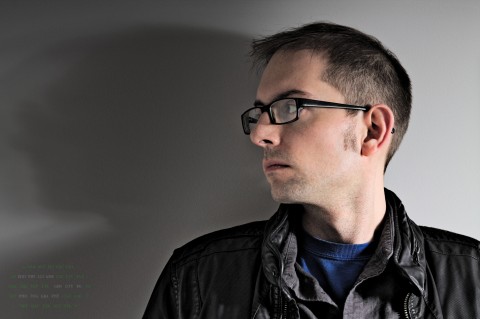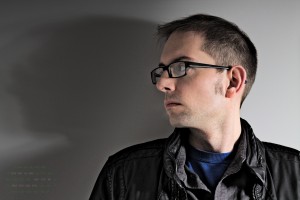
In SmokeLong‘s “Why Flash Fiction?” series, flash fiction writers and editors explore what draws them to the form, from the first time they wrote a piece of flash to why flash resonates with them. In this column, flash fiction writer and Longform Contributing Fiction Editor James Yates compares and contrasts his experiences with flash and longer short stories. Submit your own “Why Flash Fiction?” article or other flash-related essays on our Submittable page!
By James Yates
As a contributing fiction editor for Longform.org, I read online literary magazines and select a “Fiction Pick of the Week.” Aside from the usual emphasis on quality, the desire to feature small, independent presses drives me, primarily to make sure the site is not promoting only the New Yorker and other behemoths. The only requirement, dictated by the Longform founders, is that the stories I feature be at least 1,500 words long. I’ve read dozens of stellar works, only to become crestfallen when they come to 1,200 or 1,300 words.
Word counts are strange beasts, especially when an arbitrary number, even rightly and necessarily dictated by a literary organization, becomes a dividing line between long form and short form fiction. Of course, much like definitions of genre, flash fiction limits are not easily agreed upon. Some writers and journals deem flash fiction to be 500 words; others set the threshold at 1,000. Microfiction can be defined as a single sentence, a six-word story, or anything under 250 words. Without hyperbole, it’s very possible to ask fifty different writers to define flash fiction and receive fifty different answers. This division, however, is beautiful. Word counts don’t often lend themselves to tedious “MFA vs. ___”-like debates. No matter what someone defines as flash fiction, it still moves toward the ultimate goals of any fiction: to move, to challenge, to illuminate. Within any strict word count, the limitations can make for many possibilities.
**
I returned to serious fiction writing in 2010, after a creatively squandered decade of listlessness, confusion, and a grave misunderstanding of how much time, reading, and effort actually went into the romantic concept of “being a writer.” I started writing flash fiction as a way to hone my understanding of craft, plot, and movement; the small spaces I limited myself to yielded surprising results. The stories I wrote were generally straightforward and traditional, but as my stack of drafts grew, I noticed instances of my branching out, my willingness to make mistakes for the sake of exploring new ideas and ways of creating imagery. Not surprisingly, this also coincided with more reading, as I read more independent presses, publishers, and writers. One of the first books that truly highlighted the possibilities of flash fiction was Matt Bell’s Cataclysm Baby, and it also defied categorization. The chapters are scary, sometimes biblical accounts of demonic, animal-like children and the doomed landscapes they inhabit. The book was called a “novel(la),” and while the chapters combined into a wonderful collective work, the individual sections also worked as their own tales and worlds, and could be read alone as flash pieces. Like a beautiful domino effect, the more I read, the more I became aware of other writers who can do many things within tiny thresholds: Amelia Gray, Kathy Fish, Lucy Corin, and Kate Bernheimer, to name a few.
**
My flash fiction tends to be rejected at a higher percentage than my longer work, but for some reason, I take these rejections easier. Flash fiction is much more fluid, and tends to remain a work in progress longer. I work toward one draft, and if it’s declined for publication, then I work on another angle, rather than just cosmetic changes. Some writers and editors might balk at this; I’m not saying that I send out intentionally weak work, nor am I writing only with an eye on publication. Instead, this is more about my approach to flash fiction. When a longer work is turned down, it’s usually for a glaring issue (a plot discrepancy; an editor’s taste not being in line with the work; etc.). Since I tend to write flash that works more as open-ended rather than concrete, many avenues remain uncovered. If one doesn’t work, I approach another hook, another opening, or another motivation. I’m generally happy with my published flash fictions, but every single one can still be taken apart and reshaped, if I so desired. Overall, flash is like a running stream: it remains the same, but never maintains a consistent state. One of the common themes in my work is an ending frozen in time, with a character waiting for a response, a choice, or lost in their own possibilities. While I’m actively working to not end the majority of my fiction in this way, this idea lends itself so well to flash. Yes, a flash can have a beginning, middle, and an ending, but some of my favorite short works are moments, glimpses, a period of time with hints to the past and the future. The most recent example that sums this up is the opening sentence of Kendra Fortmeyer’s “The Lepidopterist,” from Hobart: “The killer dispatched the boyfriend easily in the kitchen, and then he had an idea.” Fortmeyer drops the reader into the scene, hints at the past, and quickly moves to the future. The story is grotesque and thoughtful, a precise mix of horror and beauty, dark impulses and a yearning for a better place. Can this be achieved in a novel or a 5,000 word story? Of course. But in Fortmeyer’s flash, the space becomes an immediacy, a claustrophobic area filled with a variety of thoughts, motivations, and outcomes.
**
During my thesis meetings with writer Christian TeBordo, he remarked on how surprised he was to find my novel to be more “traditional,” compared with the experimentation and weirdness I tend to infuse in my flash fiction. At first, I was worried by this assessment, but then I realized everyone has their own ways of approaching craft and style. TeBordo’s most recent novel, Toughlahoma, is a work I’d never be able to sustain through my own work: a full-length novel of surrealism, intricate language play, and perverse humor in unexpected moments. However, I’ve tried to create my own strange worlds within flash. Just because I wouldn’t be able to do this over the course of a novel doesn’t mean my work doesn’t have a sense of playfulness, craft, and experimentation. I’m not one of the foremost writers of flash fiction, and I probably never will be. However, the form, with its ability to take so many shapes and rules, allows me to be an expert in my own way, to push my own boundaries and strive toward a creative piece that works in the right way for me. The only true requirement of a flash fiction writer is that one must read widely for an idea of what is possible. After that, the journey between prose, poetry, singular works, and collections continues to evolve and shift. I’m grateful to be a small part of the community, and the daring work I consistently read always keeps me going in a never-ending attempt to keep my writing in various directions.
 James Yates is a Contributing Editor to Longform.org. His most recent stories (flash and otherwise) have appeared in matchbook, Hobart, and Vol. 1 Brooklyn; his book reviews have appeared in The Fanzine, Necessary Fiction, and The Collagist. A graduate of the MFA Program at Roosevelt University, he lives in Chicago’s Rogers Park neighborhood. James can be found on Twitter @chicagoexpatjy.
James Yates is a Contributing Editor to Longform.org. His most recent stories (flash and otherwise) have appeared in matchbook, Hobart, and Vol. 1 Brooklyn; his book reviews have appeared in The Fanzine, Necessary Fiction, and The Collagist. A graduate of the MFA Program at Roosevelt University, he lives in Chicago’s Rogers Park neighborhood. James can be found on Twitter @chicagoexpatjy.

 The core workshop of SmokeLong Fitness is all in writing, so you can take part from anywhere at anytime. We are excited about creating a supportive, consistent and structured environment for flash writers to work on their craft in a community. We are thrilled and proud to say that our workshop participants have won, placed, or been listed in every major flash competition. Community works.
The core workshop of SmokeLong Fitness is all in writing, so you can take part from anywhere at anytime. We are excited about creating a supportive, consistent and structured environment for flash writers to work on their craft in a community. We are thrilled and proud to say that our workshop participants have won, placed, or been listed in every major flash competition. Community works.